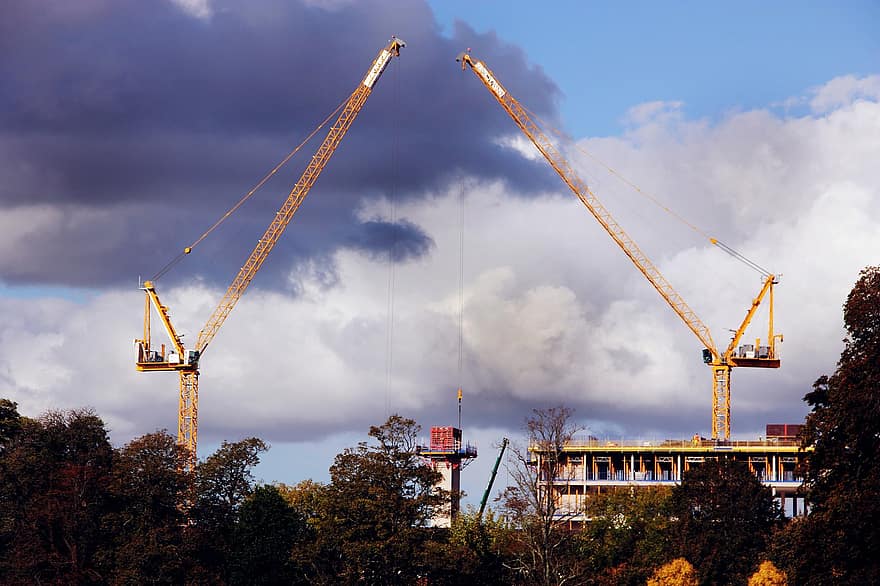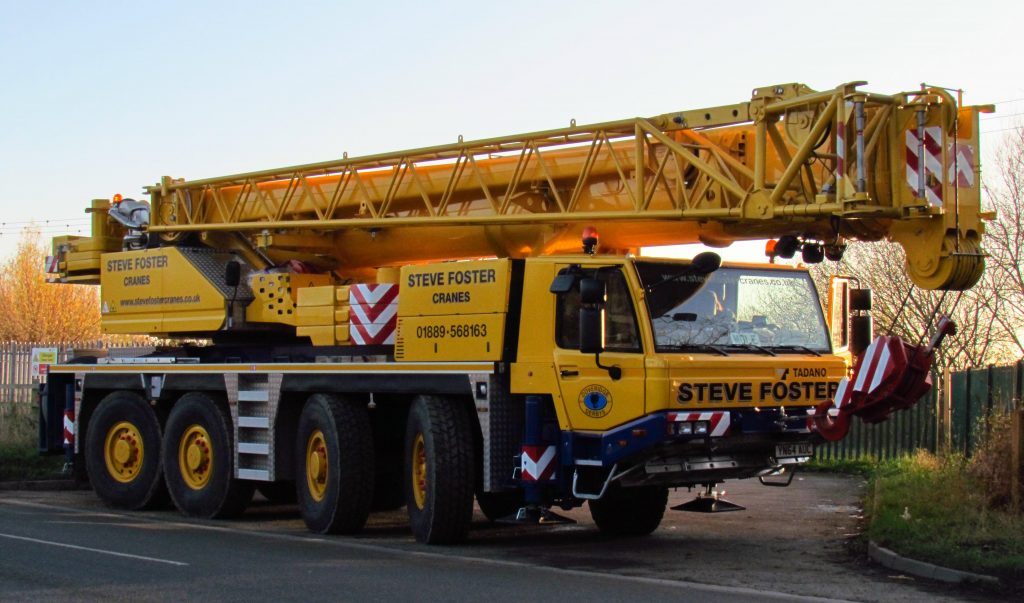Contents
– What are the categories of construction cranes?
– Different types of booms
– What are the characteristics of a construction crane?
A construction crane is a machine used for lifting and handling high loads in the construction industry. These machines are equipped with a lattice or telescopic jib (or lifting arm) and are mounted on wheels or tracks. This equipment must be perfectly adapted to the configurations of the construction site on which it is used. Therefore, parameters such as hook height, boom reach, maximum load, end load and crane power must be taken into account.
What are the categories of site cranes?
There are two main categories of site cranes: mobile cranes and tower (or static) cranes.

Tower cranes are usually fixed to the ground and can be equipped with concrete counterweights at the base. They are used on construction sites for infrastructure and buildings, but can also be found on shipyards. This type of crane is usually equipped with a lattice boom with a few rare exceptions. There are two types of tower cranes: top-mounted cranes, which rotate at the top, and automated tower cranes, which rotate at the base.

Mobile cranes are used when no other static crane is present or can perform the work. They are used, for example, for erecting tower cranes in the construction industry, for erecting wind turbines in the energy sector or for moving machinery in the industrial sector. They are mounted on wheels or crawlers and their lifting arm can be telescopic or with lattice elements. There are three types: self-propelled cranes, self-propelled all-terrain cranes and cranes on a carrier.
Different types of booms
Cranes are all made up of a single mast (the part that supports the boom), but it is the shape of the lifting arm that differentiates them. Indeed, the jib can be
– Articulated,
– Telescopic (in the case of Mobile Cranes),
– Single arrow (in the case of automated tower cranes),
– Or an assembly consisting of an arrow, counter-arrow, arrow holder and pulling rod for top-mounted cranes.
No one type of crane is better than another. After all, every crane has its field of application: Articulated jib cranes and telescopic cranes are quickly up and running. Jib cranes are less powerful, but they are easy to install.
What are the characteristics of a construction crane?
Preliminary studies for the choice of a construction crane must be carried out meticulously and according to rigorous criteria. Various parameters concerning distances, loads and heights must be estimated. This information will then allow the selection of the most suitable machine and at the same time avoid additional man-oeuvres and insufficient lifting capacity.
The first parameter to be taken into account is the height under hook. It is characterized by the distance between the hook when fully raised and the ground. In order to correctly assess the height under hook, the following must be taken into account:
– the height of the building to be constructed,
– the length of the slings,
– the transport height of the loads,
– the minimum safety distance (2 m)
– obstacles in the vicinity of the crane.
The second parameter to be taken into account is the crane’s reach. This is the horizontal distance between the axis of rotation of the crane and the hook at the end of the boom. In order to properly estimate the required reach, the surface area of the building, the place where the loads are stored and the areas where trucks are unloaded must be taken into account.
The maximum crane load (or lifting capacity) is the highest load that can be transported by the crane from the jib foot to the distance previously defined by the user. To determine the required lifting capacity, the highest loads to be transported to the construction site and the distance over which they are to be carried must be estimated.
The end load is the highest load that the crane can lift and transport to the end of its jib. Therefore, it will be necessary to determine the highest loads that will have to be lifted to the maximum span. These loads may include concrete form work, precast elements and various materials and equipment.
Finally, the last criterion is the power of the crane: This is the result of the maximum load multiplied by its span. This size is expressed in meter/tonne. Following this last criterion, you will now be asking yourself whether you should buy or hire a crane truck. This interesting post on: What Should You Consider Before Hiring A Crane should help you with your decision making.